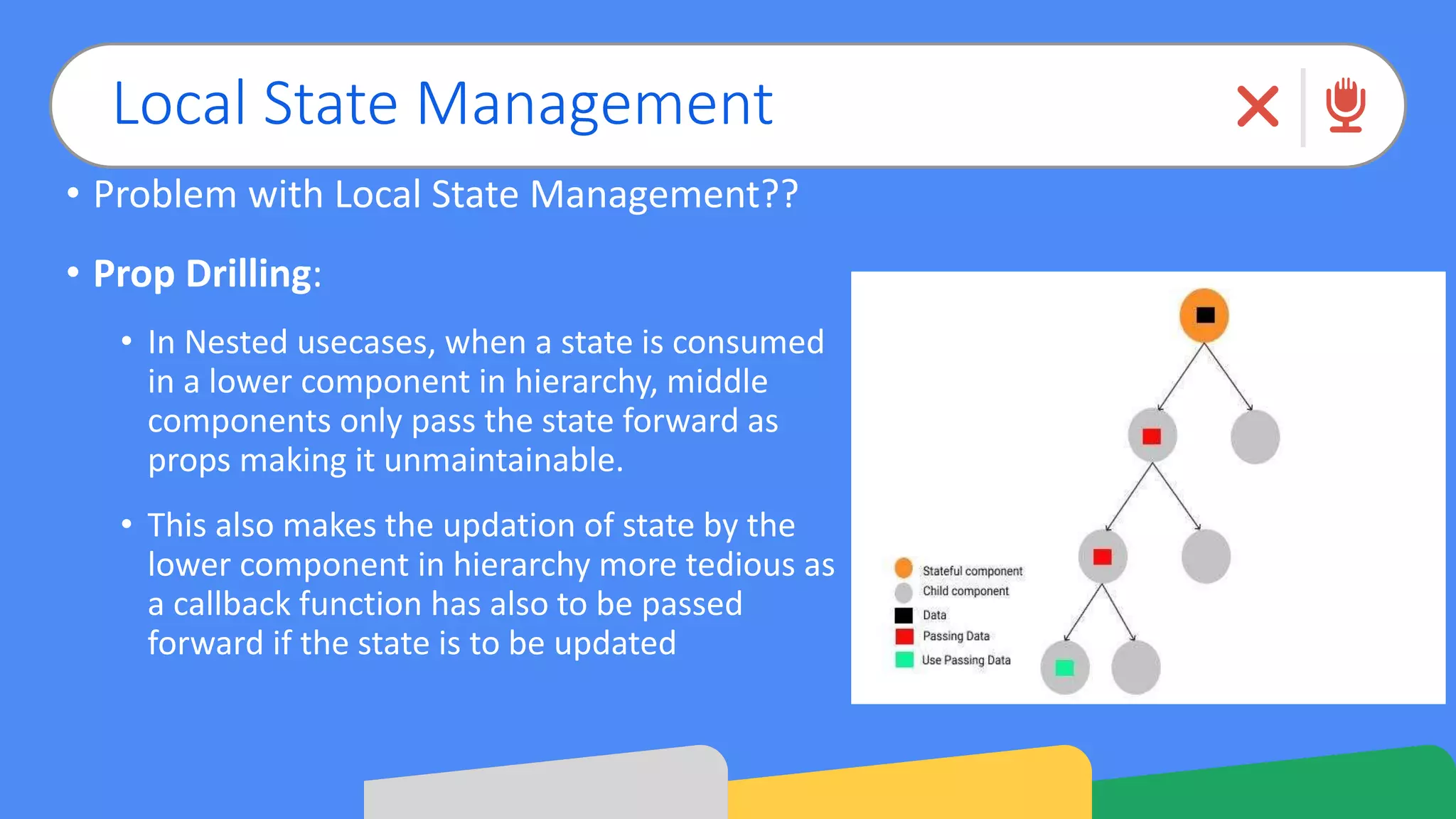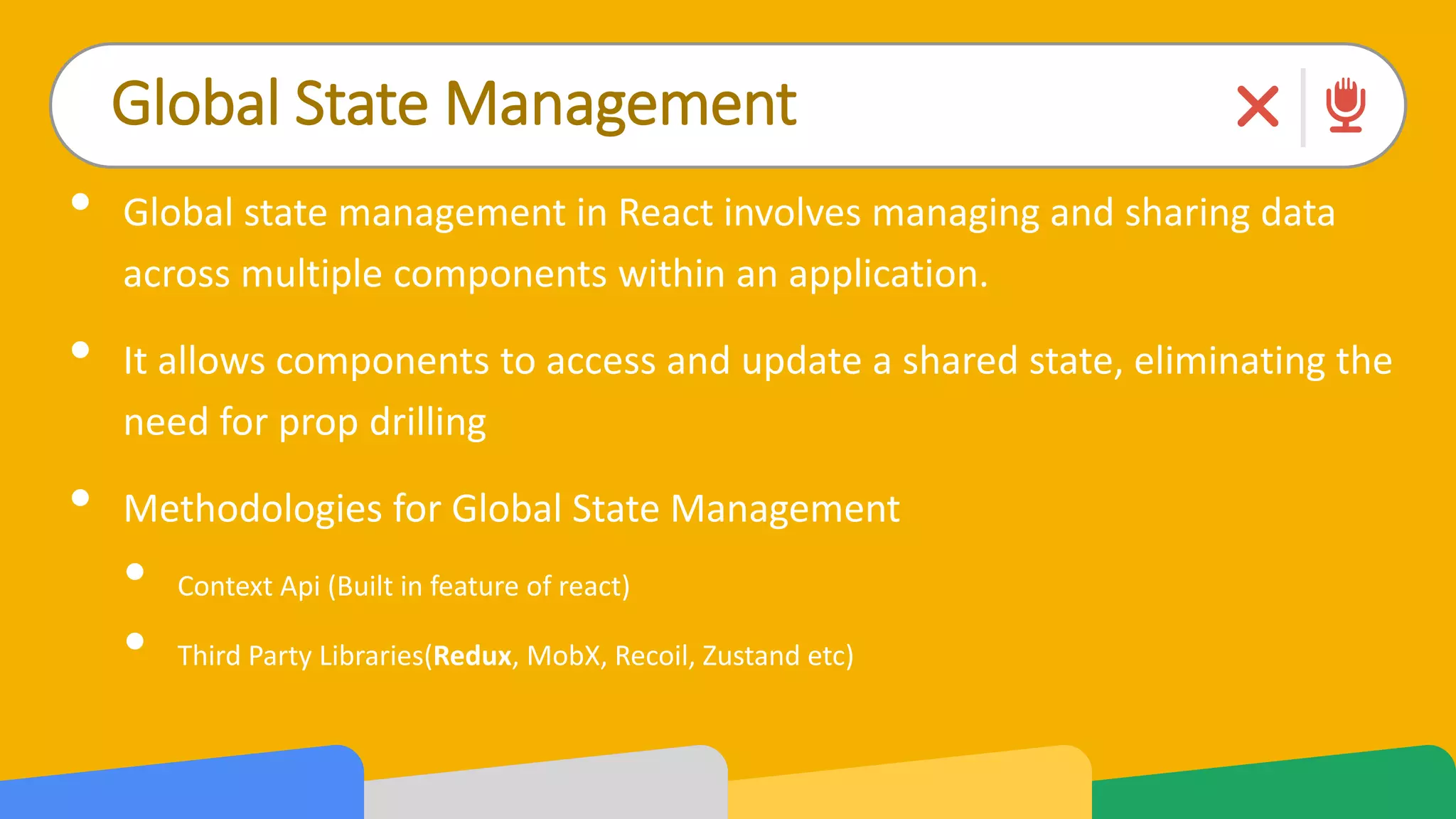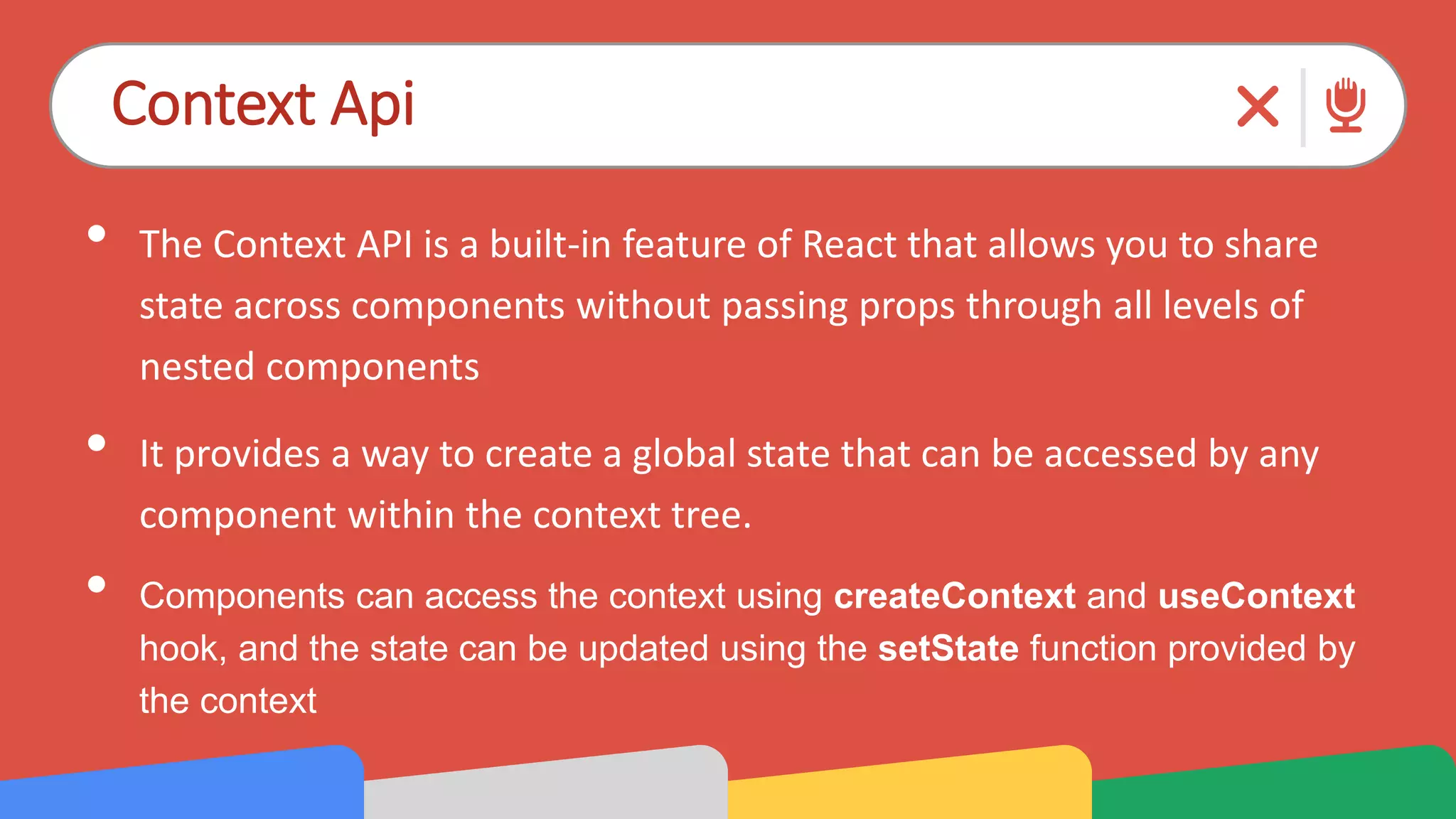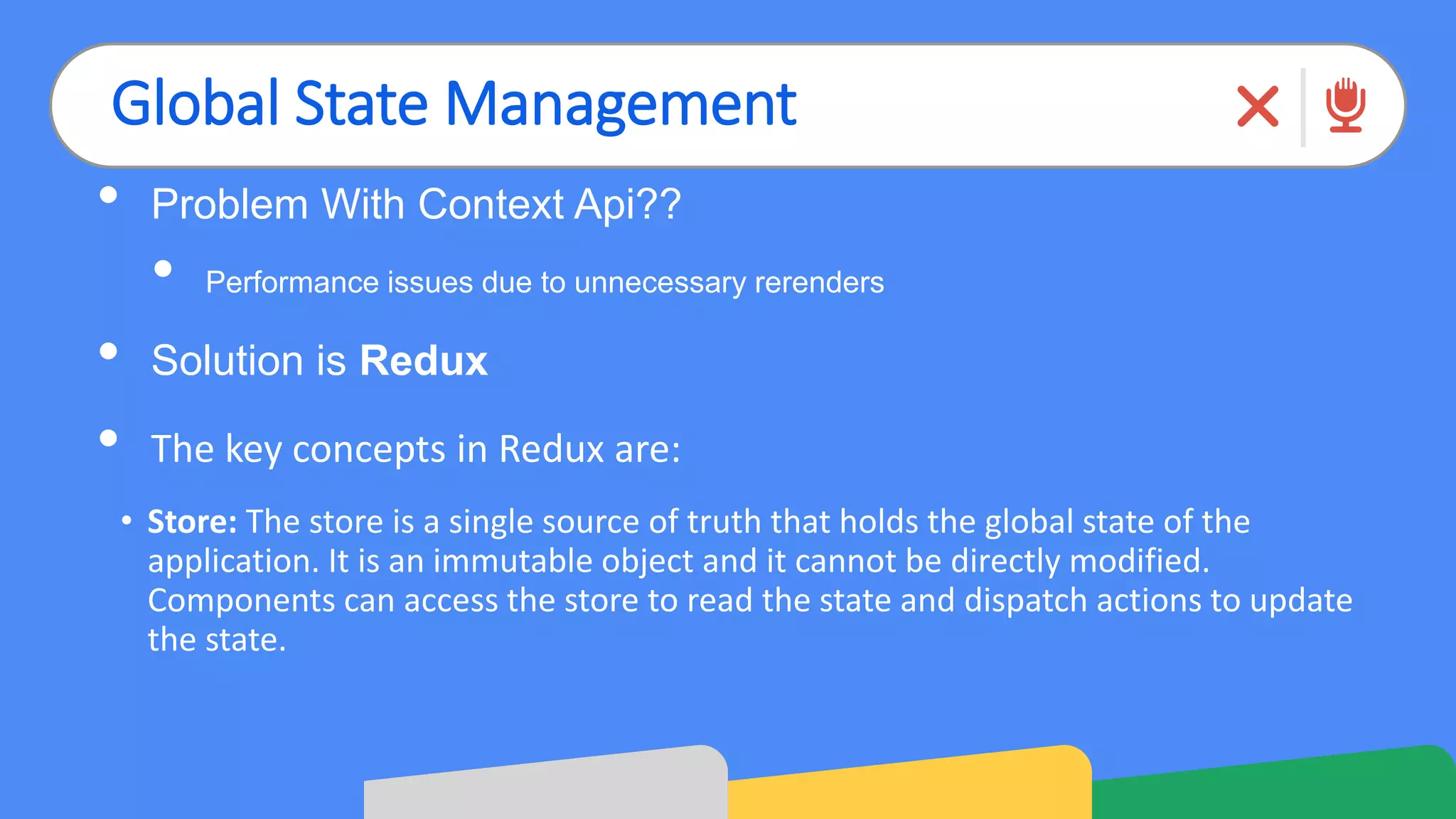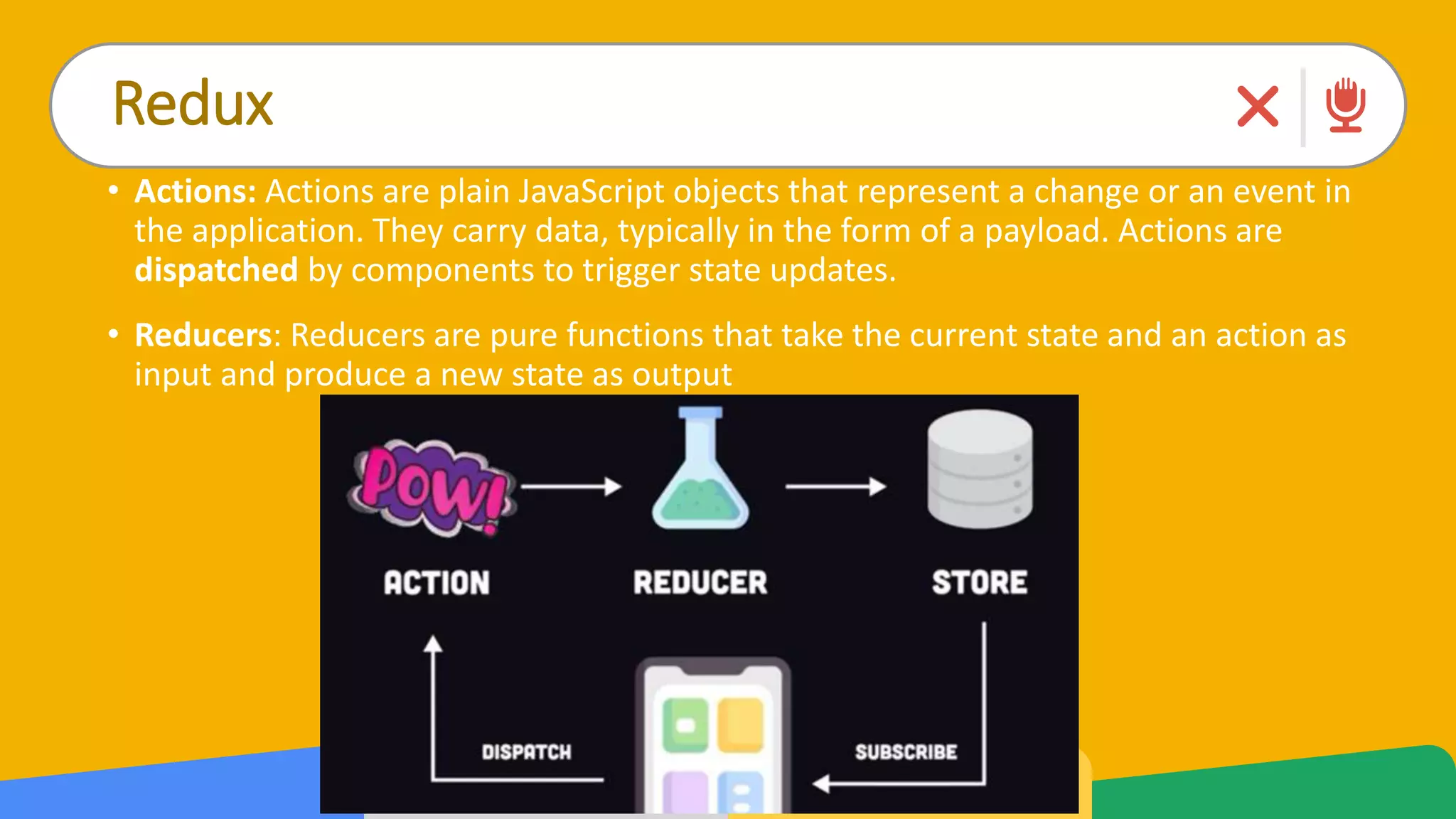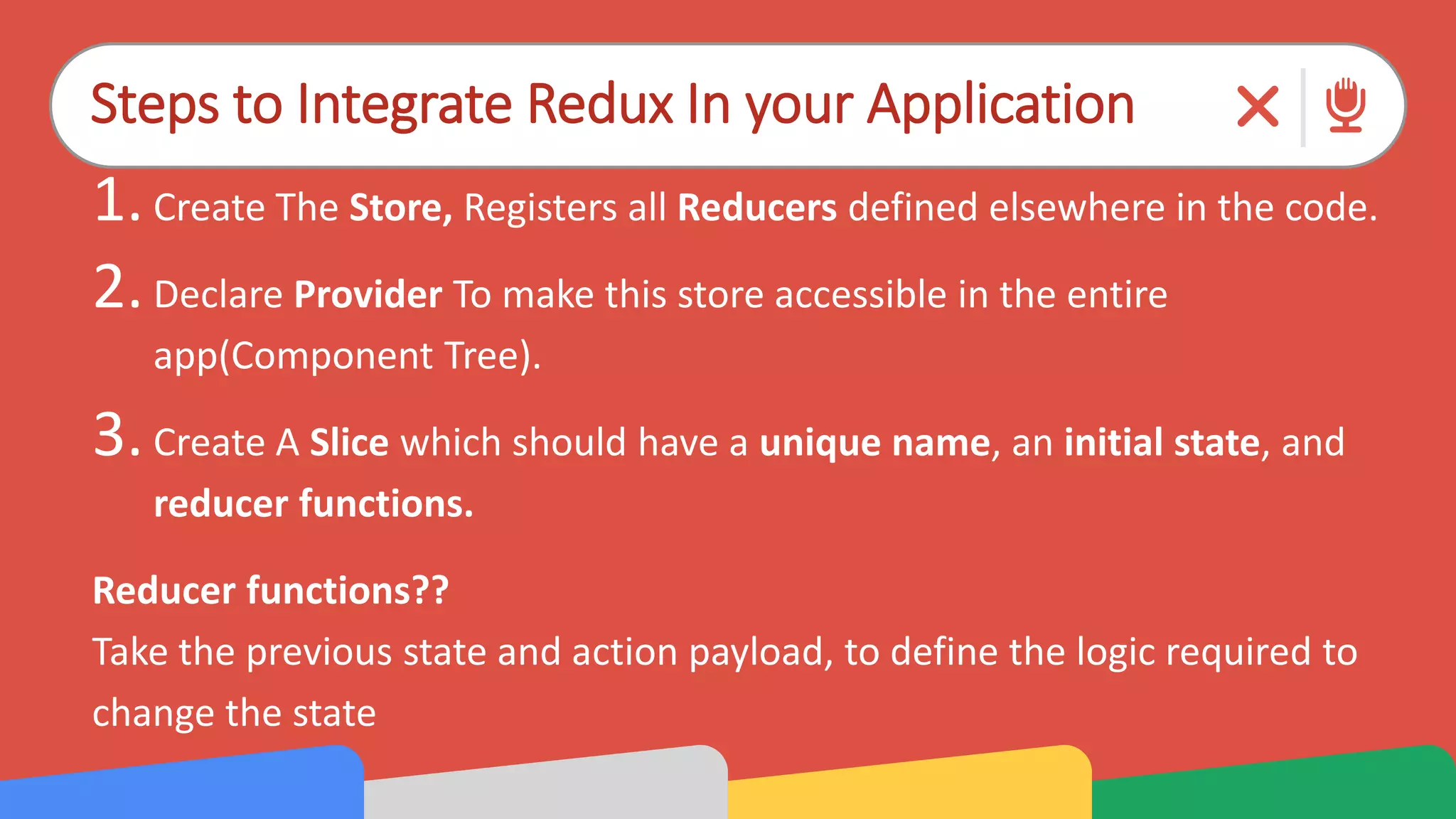The document summarizes key concepts from a React frontend bootcamp session including performance optimization hooks like useMemo and useCallback, state management in React using local and global approaches, and integrating Redux for global state management. Specifically, it discusses:
1) The useMemo and useCallback hooks can optimize performance by memoizing values and functions to prevent unnecessary re-renders.
2) Local state management uses useState within a component while global approaches like Context API and Redux share state across components.
3) Redux follows a pattern with a central store holding application state, actions describing state changes, and reducer functions defining update logic.

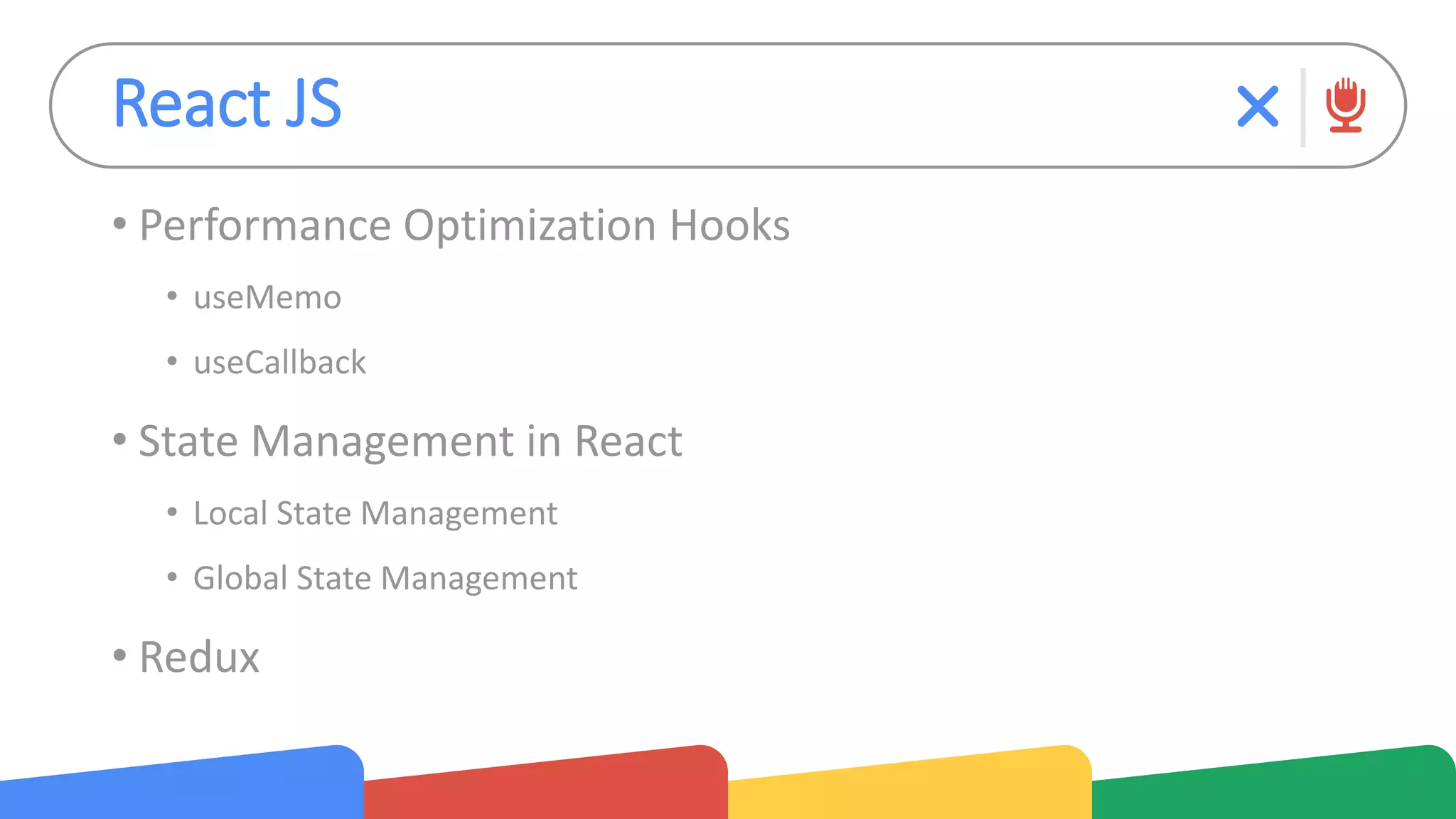
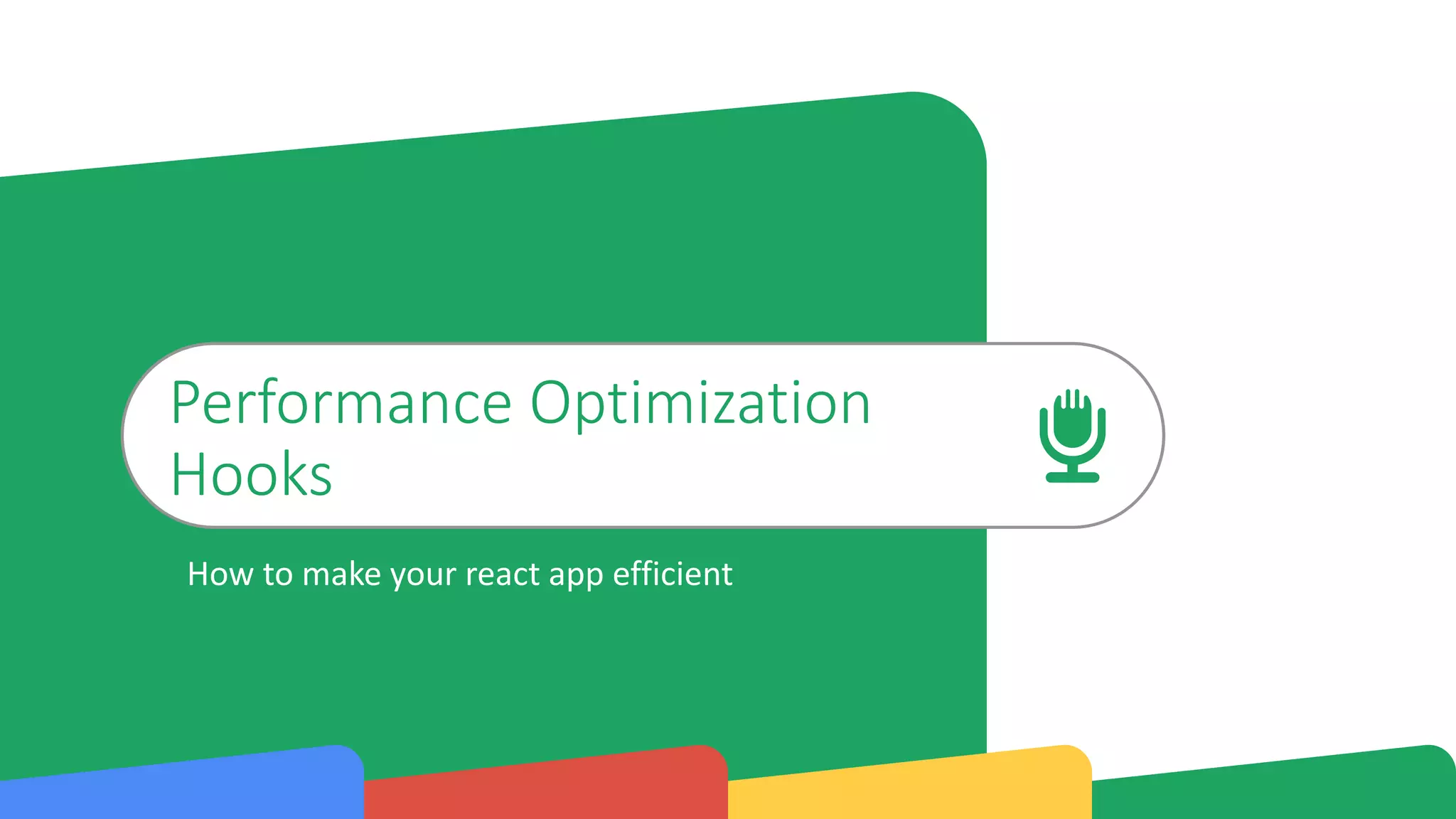
![useMemo
• The useMemo hook is a built-in hook in React that allows you to
optimize the performance of your components by memoizing the
result of a computation and only recomputing it when its
dependencies change.
const memoizedValue = useMemo(() => {
// computation or calculation
}, [dependency1, dependency2]);](https://image.slidesharecdn.com/frontendbootcamp4-230407123758-565b1e40/75/FRONTEND-BOOTCAMP-4-pptx-4-2048.jpg)
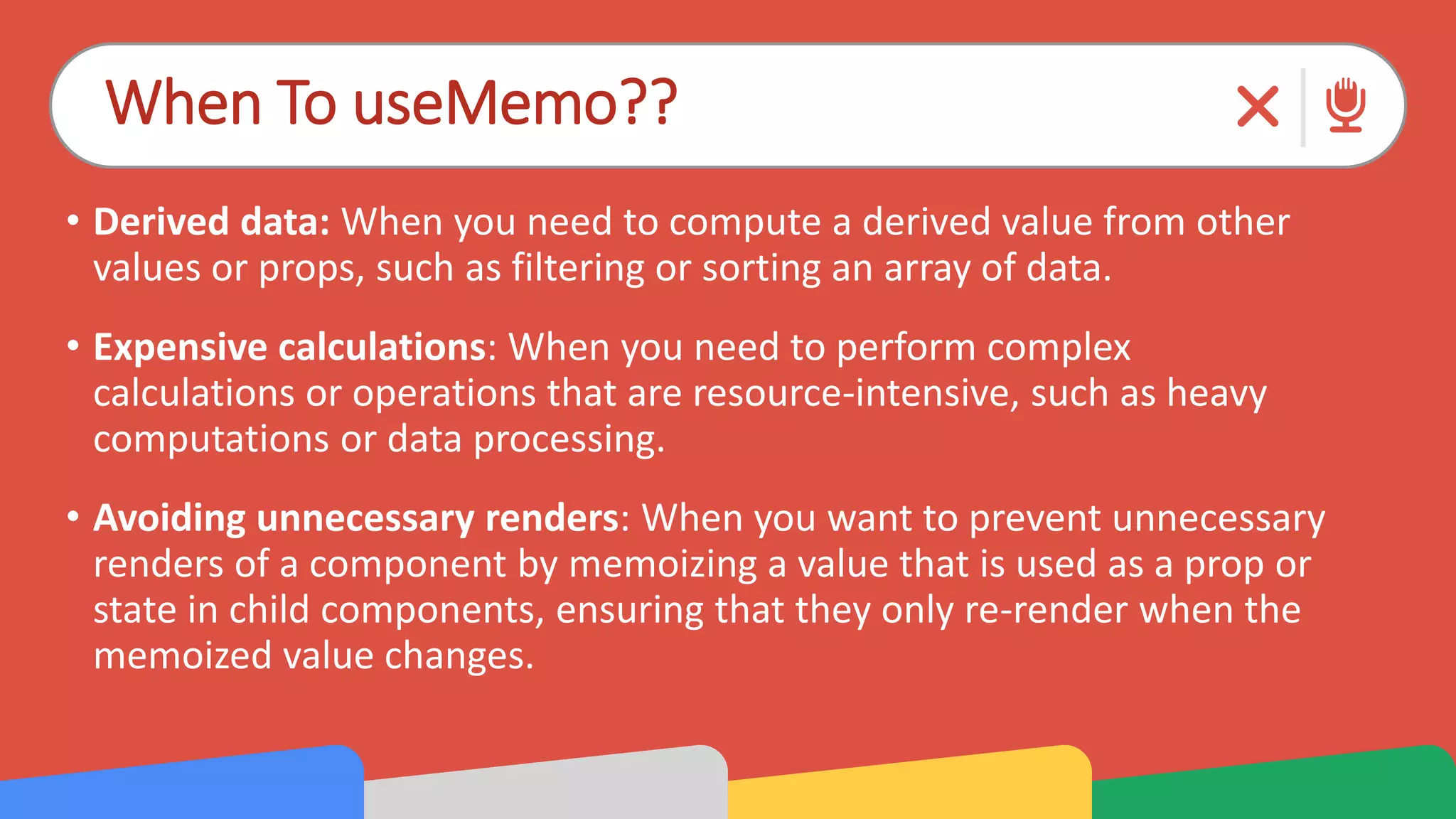
![useCallback
• The useCallback hook is a built-in hook in React that allows you to optimize
the performance of your components by memoizing a callback function and
only recreating it when its dependencies change.
• It is often used to prevent unnecessary re-renders of child components that
receive callback functions as props.
const memoizedCallback = useCallback(() => {
// callback function
}, [dependency1, dependency2] );](https://image.slidesharecdn.com/frontendbootcamp4-230407123758-565b1e40/75/FRONTEND-BOOTCAMP-4-pptx-6-2048.jpg)
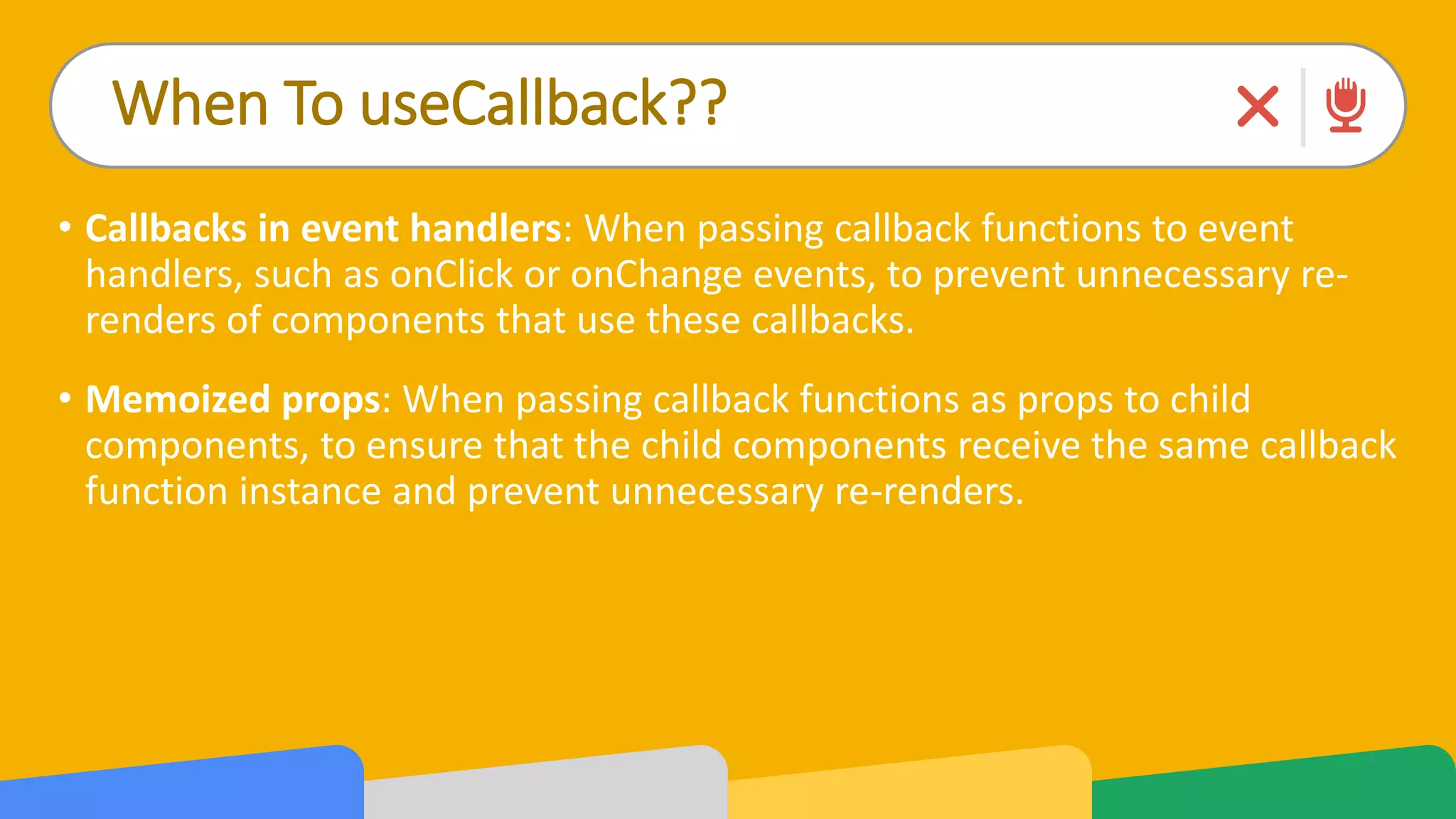

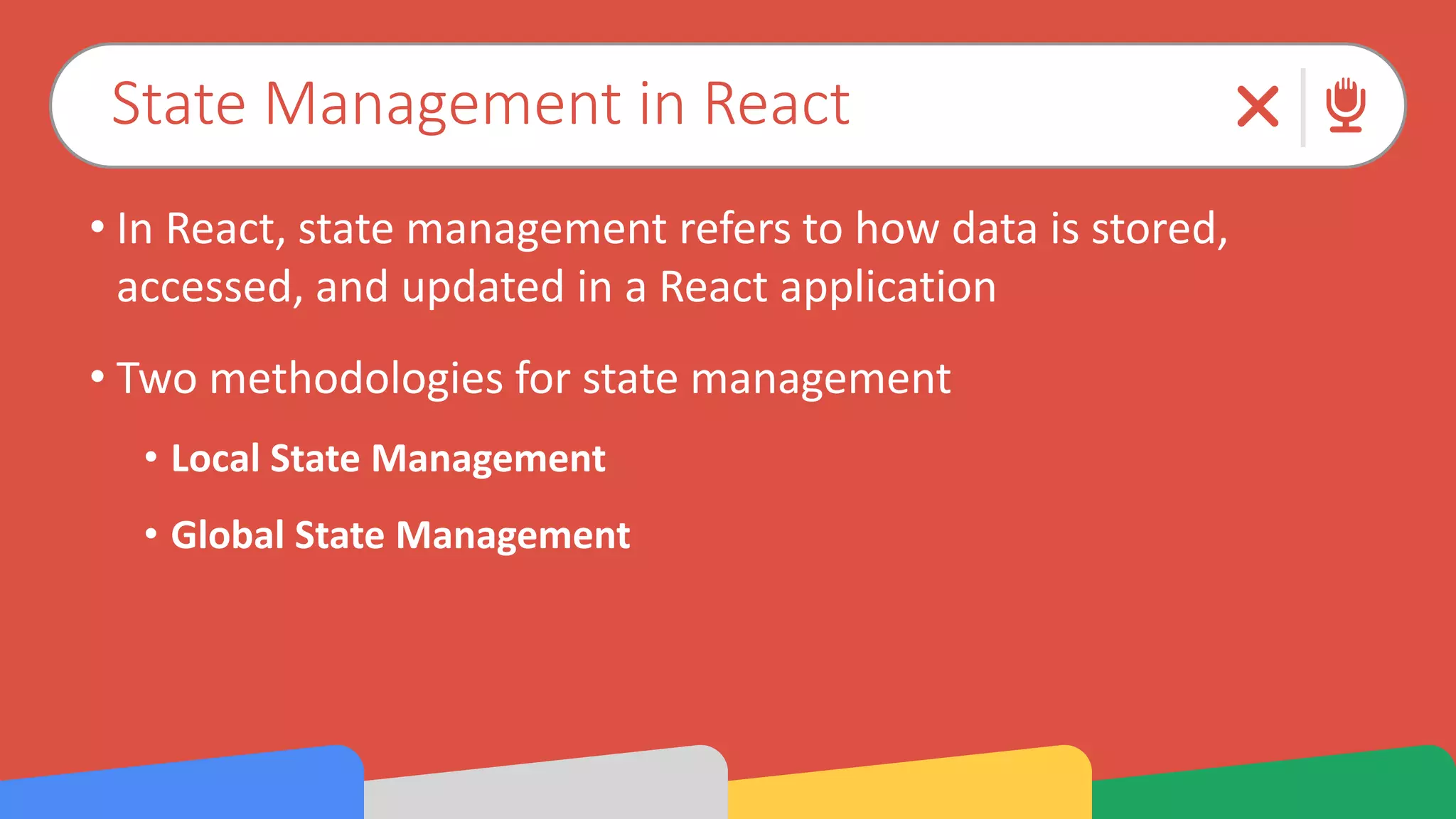
![Local State Management
• Local state management in React involves storing and managing data
within a single component.
• It allows a component to have its own private state that can be used
to store and manage component-specific data.
• The useState hook is the most common way for local state
management, allowing you to declare a state variable and its initial
value within a functional component.
const [count, setCount] = useState(0)](https://image.slidesharecdn.com/frontendbootcamp4-230407123758-565b1e40/75/FRONTEND-BOOTCAMP-4-pptx-10-2048.jpg)
